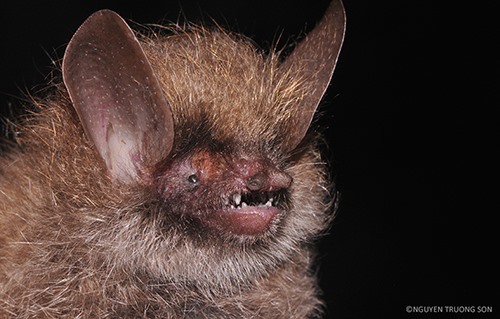 Environment
Environment

" />Việt Nam accounts for 87 of the 163 new species of animals and plants discovered in the Greater Mekong region, according to a report released on Monday by the World Wide Fund for Nature.
 |
| Murina kontumensis bat. — Photo WWF |
HCM CITY – Việt Nam accounts for 87 of the 163 new species of animals and plants discovered in the Greater Mekong region, according to a report released on Monday by the World Wide Fund for Nature (WWF).
A new frog measuring less than 3cm long, which took 10 years to be confirmed as a new species, a rainbow-headed snake, a dragon-like lizard and a newt that looks like a “Klingon from the movie Star Trek” are four of the 163 species discovered.
The report, titled Species Oddity, documents the work of hundreds of scientists who discovered nine amphibians, 11 fish, 14 reptiles, 126 plants and three mammals in Cambodia, Laos, Myanmar, Thailand, and Việt Nam.
The discoveries also include a bat found in the Central Highlands of Việt Nam with thick and woolly fur on its head and forearms, a rare banana species from Thailand, a tiny frog from Cambodia and a gecko with pale blue spotted skin and piercing dark eyes that was found hiding among the remote mountains of Laos.
This brings the total new species of plants, birds, mammals, reptiles, fish, and amphibians discovered in the region to 2,409 since the WWF began compiling new species reports in 1997.
“The Greater Mekong region is a magnet for the world’s conservation scientists because of the incredible diversity of species that continue to be discovered here,” Jimmy Borah, wildlife programme manager at WWF-Greater Mekong, said.
“These scientists, the unsung heroes of conservation, know they are racing against time to ensure that these newly discovered species are protected.”
The Greater Mekong region is under intense development pressure from mines to roads to dams, threatening the survival of the natural landscapes that make it so unique.
Poaching for meat and the multi-billion dollar illegal wildlife trade puts additional pressure on the region’s wildlife, meaning many species could be lost before they are even discovered.
“Việt Nam is one of the most bio-diverse countries in the region, and the discovery of 87 new species shows that there are still more amazing discoveries to unlock. But we are currently faced with a huge demand for wildlife for consumption in Việt Nam,” Văn Ngọc Thịnh, country director of WWF-Việt Nam, said.
“To save these species, improving law enforcement, stopping illegal poaching, closing illegal wildlife markets and farming of wild rare and endangered species such as tigers and bears will be crucial.”
WWF-Việt Nam recently launched an emergency Asian Elephant Conservation Plan in co-operation with the Yok Don National Park, which has the largest wild elephant population in Việt Nam.
At the regional level, the WWF recently launched an ambitious project to disrupt the trade by closing down the biggest markets in the Greater Mekong region.
Working with partners and across borders, WWF seeks to reduce illegal trade in key threatened species like elephants, tigers and rhinos by promoting species protection legislation, supporting effective trans-boundary co-operation and improving the effectiveness of law enforcement at key border crossings. — VNS